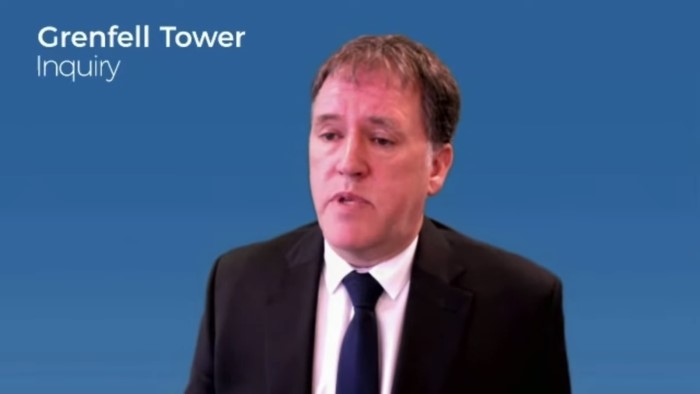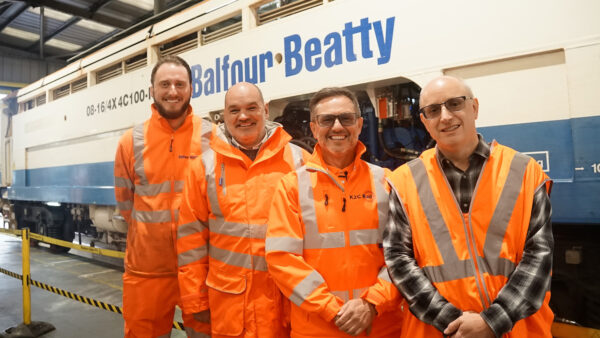
The former BRE manager who oversaw the 2014 fire tests of Celotex’s RS 5000 insulation within a cladding system has denied he knew the rig was “manipulated” to achieve a pass after it failed its first test.
Giving evidence to the Grenfell Tower Inquiry for a second day, Philip Clark was read a statement from former Celotex product manager Jonathan Roper, given after he presented his oral evidence to the Inquiry in November last year, in which he claimed that head camera footage of the BS 8414-1 test of Celotex’s rig in May 2014 showed that Clark knew of the presence of magnesium oxide board in key positions to help slow the spread of fire – something that Clark himself denied during his first day of evidence (23 February).
Celotex’s failed February 2014 test of its RS 5000 insulation, which was used in the refurbishment of Grenfell Tower, used 8mm cement fibre cladding panels. In a bid to pass the second test in May 2014, Celotex built a new rig that used 12mm thick cladding panels.
In two key positions – at the second-level thermocouples and at the top of the rig – Celotex used 8mm cladding boards combined with 6mm of magnesium oxide boards. The 8mm cladding board were a different colour and “stepped out” of the rig as a result of the increased thickness at those points.
Roper claimed in his statement that in video footage of the test, Clark had made reference to the 6mm magnesium oxide boards – which he claimed showed that Clark had in fact been aware of their presence. Roper highlighted a comment Clark made when talking to him on the video where, commenting on the improved performance of the second rig, he said: “The advantage you have as well, it seems strange but see how that flame seems to have ceased now the board is there”.
Roper said in his statement: “Clearly, whatever is being referred to was not installed on the rig at the first test, but it is present for this second test. As a result, given the context, this leads me to conclude this was a reference to the 6mm magnesium oxide board.”
Clark said he did not agree that he was making reference to the magnesium oxide later. He said: “I was talking about the small amount of flaming that was still visible between…the lower white board and the board above it and how the flame was dying down. I don’t see how he can get from that later where the board – the magnesium board was an extra 1.5m to 2m above the flame that I was talking about.”
Clark was also questioned about evidence from Celotex employee Jamie Hayes who claimed that he had witnessed a conversation between Clark and Roper about the magnesium oxide board after the May 2014 test.
Clark said he had “no recollection” of meeting Hayes other than at the February 2014 test and asserted that Hayes was “making it up”.
Asked why Hayes and Roper would make it up, Clark said: “Because it suits their argument…That the BRE knew, so it was okay. I don’t understand why an organisation which has clearly lied to its own internal employees would tell a third party who doesn’t work for the organisation about a deception that they are intending to undertake when there’s no benefit for me.
“What’s the benefit for me in hiding this? Absolutely none at all. And it’s clear – I’ve watched the evidence – that this was a systematic deception and they’ve kept it to themselves and a very, very limited number of people and I would be the last person you would want to tell something like that, because I wouldn’t let it go.”
However, Clark agreed that he personally and the BRE had the “means to knowledge of the existence” of the 6mm magnesium board on the rig.
He said: “Yes, I agree, I think that’s a failing that, as I said yesterday, has played on my mind ever since it was drawn to my attention, and I think what has happened, and I can’t say what was in their mind, but I think they’ve taken advantage that I wasn’t in the office, that they were hoping to get it up on the rig and taken down before it was spotted.”
The Inquiry continues.











